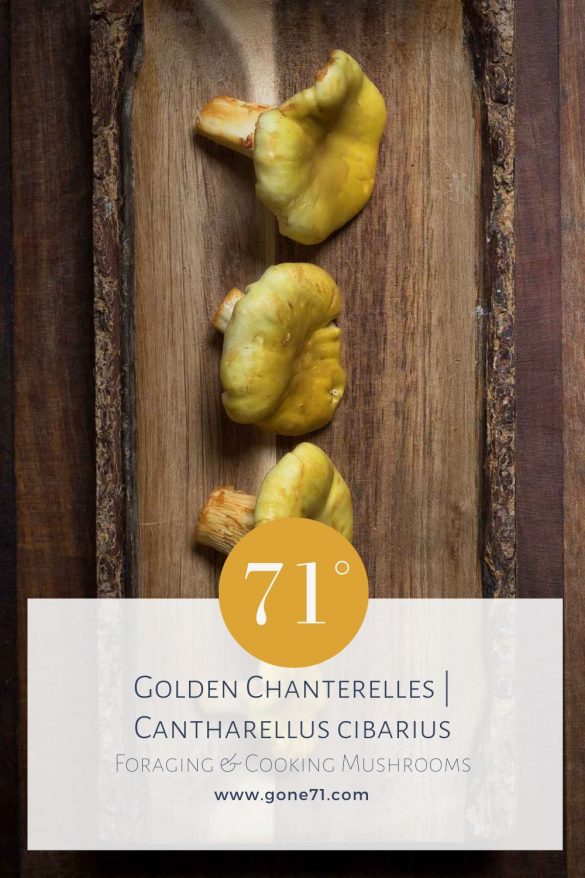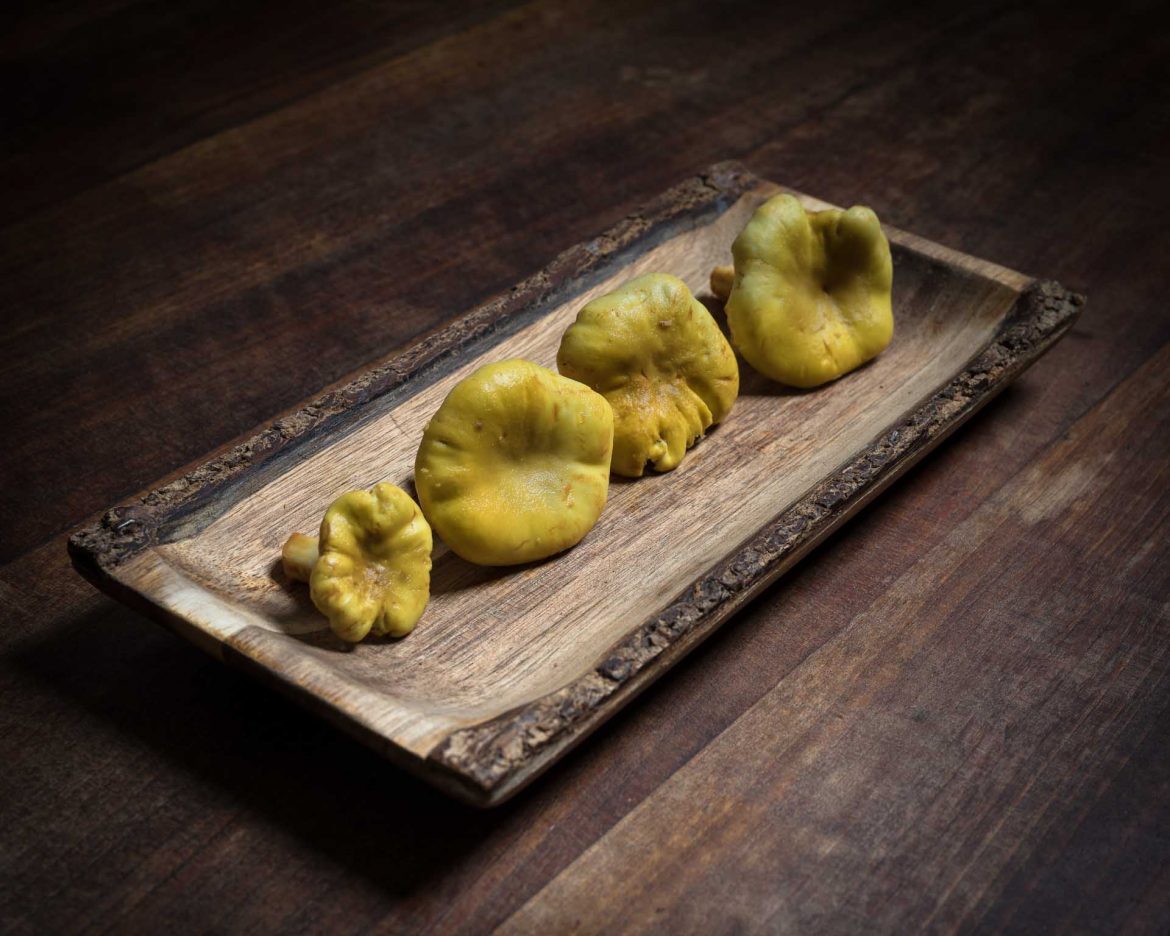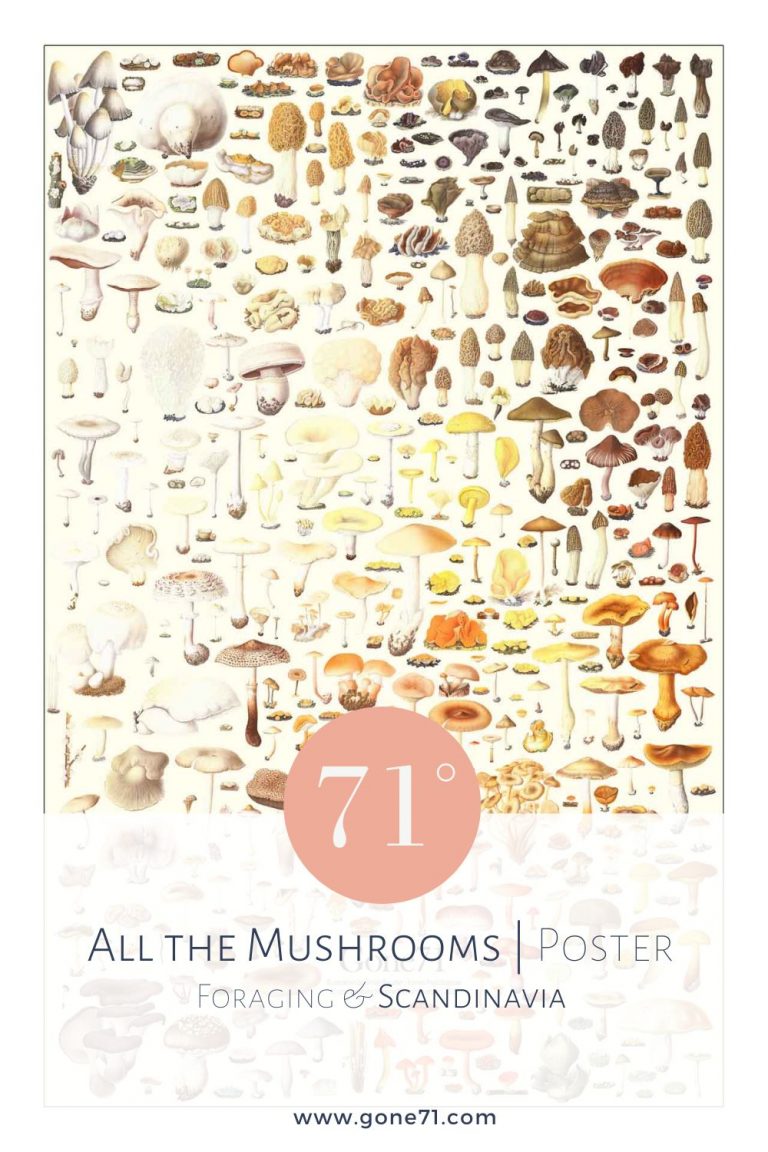swe.: kantarell | nor.: kantarell | fin.: kantarelli, keltavahvero | dt.: Pfifferling, Eierschwammerl
Golden Chanterelles are a wanted species throughout kitchens all over the world. The good news is, they are growing plentiful in many places throughout summer and autumn. Once you have learned how to identify them and where to look you can pick them on your own.
The golden yellow mushroom has a fruity aroma, a firm thick overall appearance and white flesh on the inside. During cooking the mushroom gets a chewy texture and the aroma changes to an earthy flavour with a spicy note. With the exception of drying chanterelles are suitable for almost all sorts of processing.e
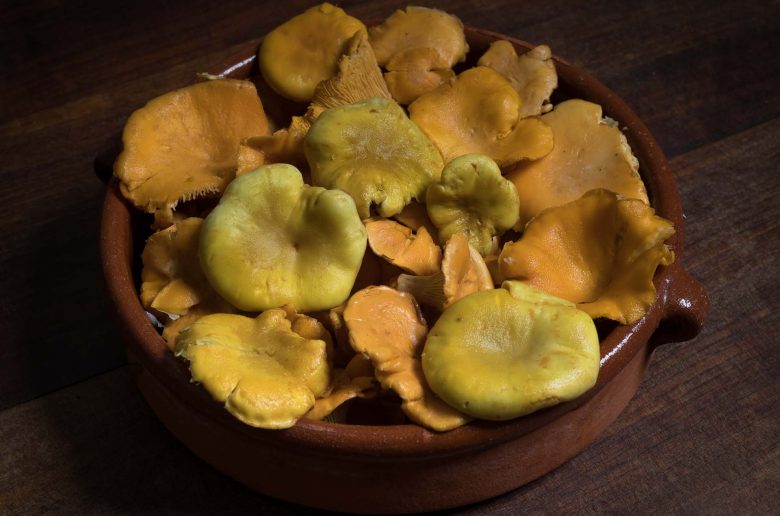
Only harvest mushrooms that you can identify with 100% certainty! The consequences can be life threatening if you are wrong. If you have the slightest doubt: do not eat the mushroom! This is not a mushroom guide! For correct identification consult a mushroom expert.
Relatives of golden chanterelles – the Cantherellus family
Botanically they belong to the genus Cantharellus – a term to summarize the different chanterelle. The black ashen chanterelle (C. cinereus) also belongs to this family. Another close and equally tasty relative for is the Funnel chanterelle (C. tubaeformis).

Cultivation of golden chanterelles
To date it is not possible to commercially cultivate chanterelles due to their mycorrhiza relationship with trees. Hence these mushrooms can have fairly high market prices. In the Central European market, golden chanterelles are usually imported from the Baltic countries like Lithuania.
Appearance of golden chanterelles
The chanterelles are generally medium-sized mushrooms and due to their bright yellow colour, overall appereance smell and taste they are usually fairly easy to identify. What we recognize as golden chanterelles are actually the fruiting bodies of the mushroom which is more or less clearly divided into a cap and stem. The hat is usually somewhat funnel-shaped with a diameter of about 2 to 9 cm, while the edge of the hat is curled up for a very long time.
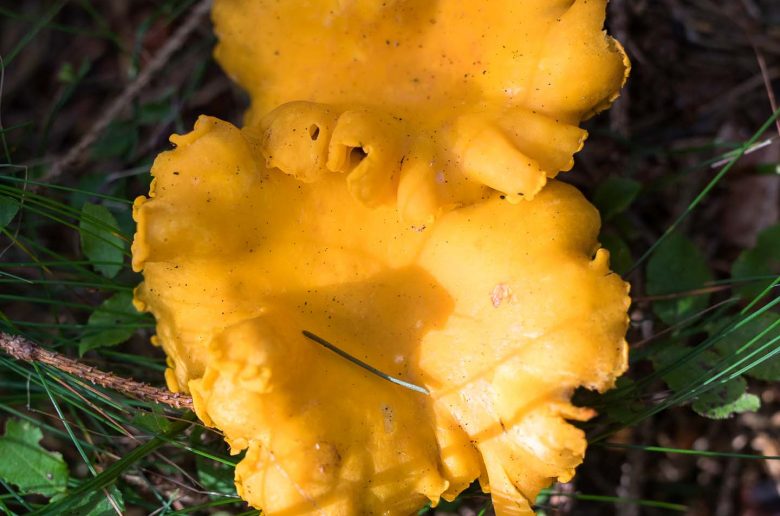
diameter: up to 10 cm
months: June – October
colours: golden, yellow, bleach yellow, egg yellow
habitat: mossy coniferous and mixed forest
smell: fruity, pleasant, like plum
taste (raw): aromatic, slightly peppery
consumption: cooked
Habitat of golden chanterelles
Since chanterelle mycelium develops a symbiosis with tree roots (mycorrhiza) they need some form of forest environment to grow. Usually they appear in groups of several specimens so if you encounter one take a good look around.
Golden Chanterelles like temperate forest areas and can be found all around the world. They have adapted to different forest types and are growing in coniferous as well as mixed and even deciduous forests (e.g. Cantharellus cibarius var. pallens). In Scandinavia they are fairly common and depending on altitude and latitude they grow usually between July and October.
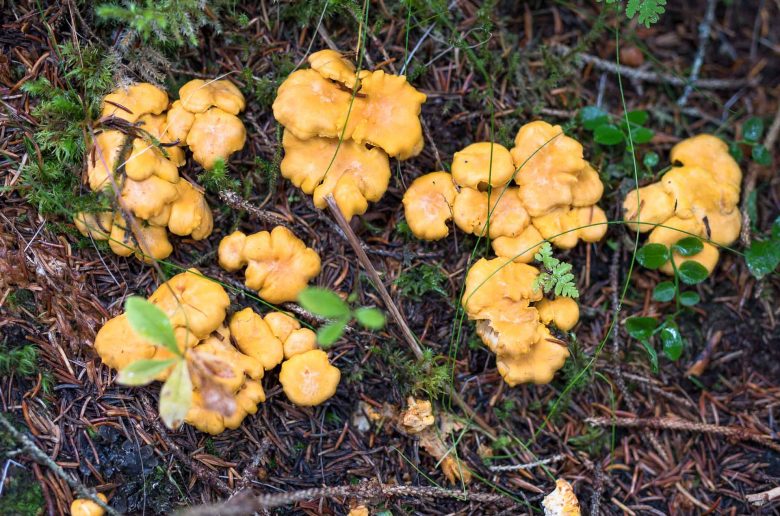
Confusing golden chanterelles with the false chanterelle
In central and northern Europe, the false chanterelle (Hygrophoropsis aurantiaca) is one of the classic doubles. One of the main characteristics of H. aurantiaca are the forked gills. These can usually be easily separated from the flesh. Mushrooms from the Cantharellus family do not actually have gills, but ridges or folds that are directly attached to the flesh. The flesh of the false chanterelles is much softer. If you squeeze the cap with your fingers, you usually only feel soft, watery flesh.
In large quantities, this fungus is considered poisonous and can cause gastrointestinal disorders. However, it is said to be harmless in small amounts. We don’t want to find out – neither should you!
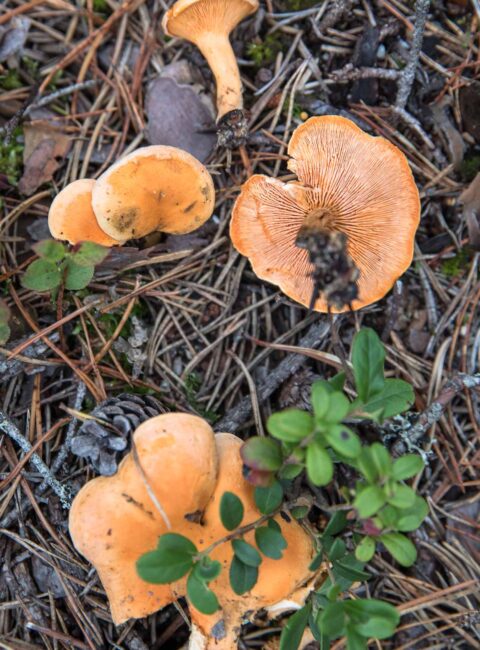
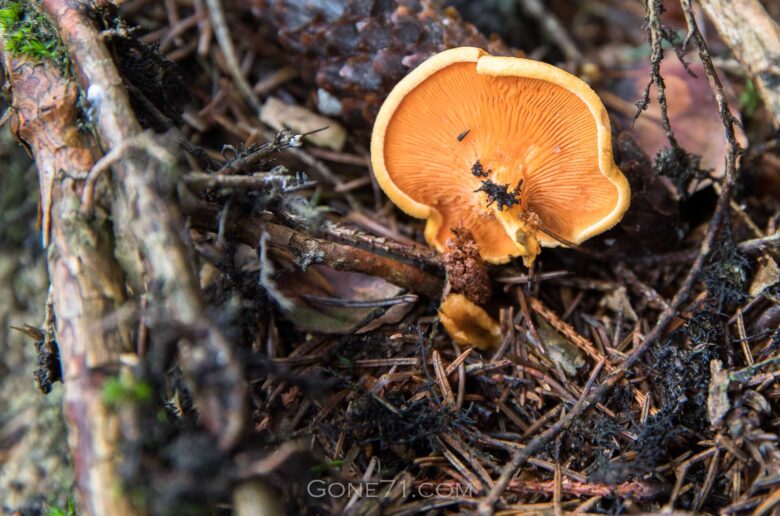
Nutrition facts of golden chanterelles
In all species of chanterelles, active ingredients have been discovered that have an antiviral, antioxidant, cancer-inhibiting and antibiotic effect. They are also high in vitamins and minerals.
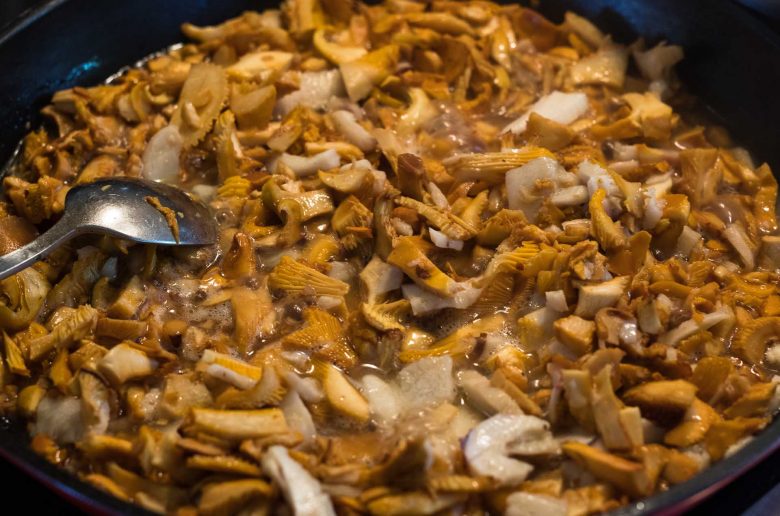
Cleaning golden chanterelles
Like for most mushrooms, cleaning with water should be avoided if possible. However, very often there is no way around and if the yellow colour is barely visible you might consider rinsing them under water. If you want to have them perfectly shiny you can put the wet chanterelles in normal flour and rinse them again. This should even get rid of the last bits of forest environment.
Kitchen use of golden chanterelles (C. cibarius)
Chanterelles are very versatile and you can add them to most dishes as topping or even as main course. In the purist kitchen they are usually sautéed in butter along with a pinch of salt, parsil and/or garlic and eventually some cream. They are also great for omelettes or as a side dish to game and other meat dishes.
For storing they can be pickled or marinated with olive oil and vinegar. Some dishes, especially sauces can be frozen. Drying is theoretically possible but we do not recommend it since the mushrooms loose much of their flavour during the process.
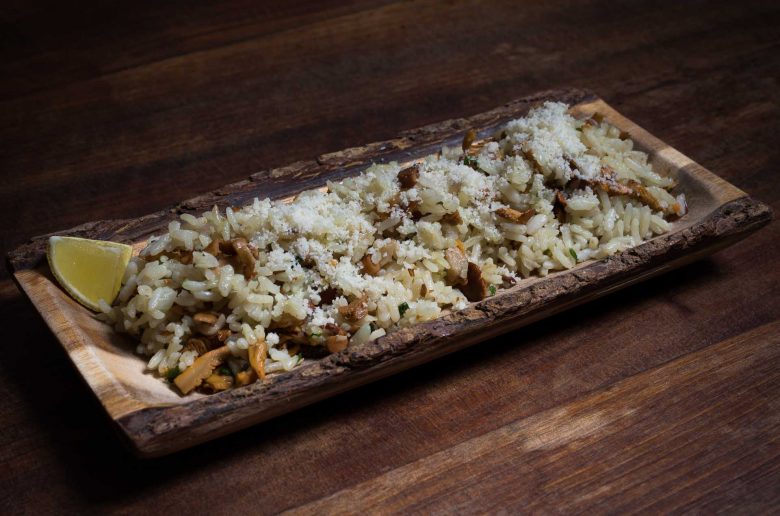
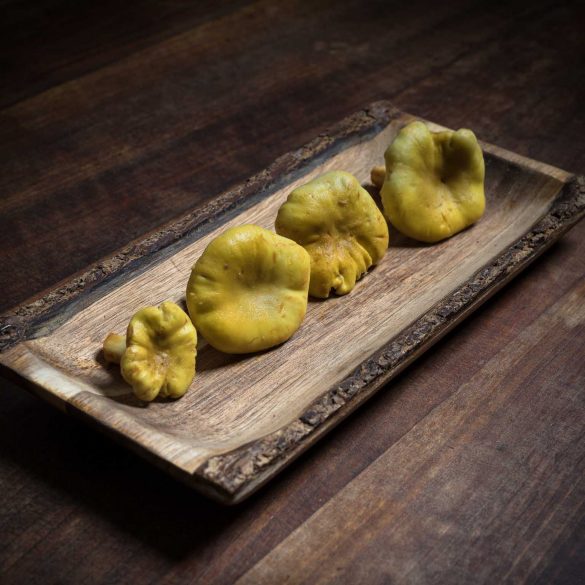
Ingredients
Chanterelle – 300 grams
Risotto-Rice – 300 grams
Onion – 1 – 2
White wine – 300 ml
Parmesan (grated) – 120 grams
Vegetable stock – 5 – 7 cups
Olive oil – 3 sp
Parsley – on demand
Salt, pepper – on demand
Instructions
- The first step for all chanterelle dishes is to clean them first. Depending on how dirty they are you can either clean them simply with a knife or if that is not enough you can rinse them additionally with water. Latter one will add even more water to the mushrooms, which is not ideal if you want to sauté them in butter or olive oil.
- Cut the mushrooms in pieces. Depending on your taste you can slice smaller ones in half and bigger ones in several pieces.
- Cut onions into cubes and sauté them in oil until they are glassy. We are usually quite generous when it comes to onions.
- Add the rice and fry it until it gets glassy.
- Add the mushrooms and douse everything with white wine.
- Let the risotto simmer and add vegetable stock under continuous stirring. The actual amount of stock depends on the type of rice and cooking temperature but we advice to prepare rather more than realizing you run out of stock to early. The stirring is especially important in the first half of the cooking process. A high quality risotto is stirred constantly during this phase in order to get the typical sticky texture.
- When the rice starts to get soft, add the small chopped parsley.
- Cook until the rice is done and most of the liquid has gone.
- Mix the Parmesan under and season with salt and pepper. If you invite some of your vegan friends leave the Parmesan aside and add it on demand.
Notes
You can also mix chantarelles with other mushrooms for this recipe. Especially ceps or members from the Leccinum family can be a great addition.
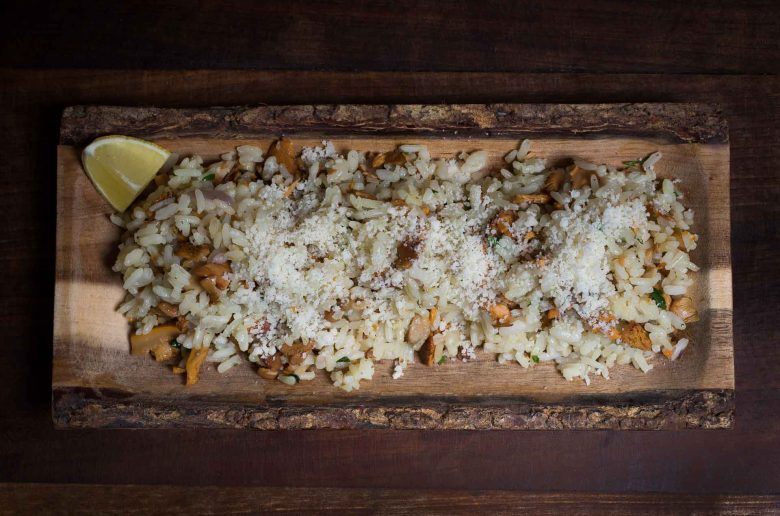
Find some inspiration in other mushroom recipes
↓↓↓
We have compiled this overview with the best of knowledge and belief, but do not claim to be complete and reserve the right to make errors.
Learn more about poisonous mushrooms and mushroom poisons here
↓↓↓
